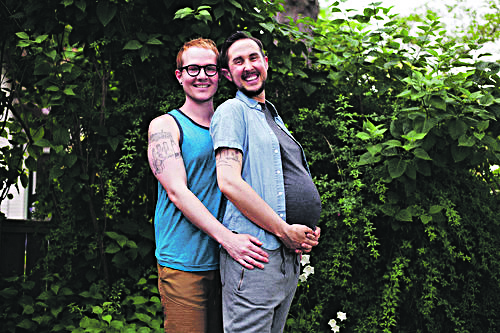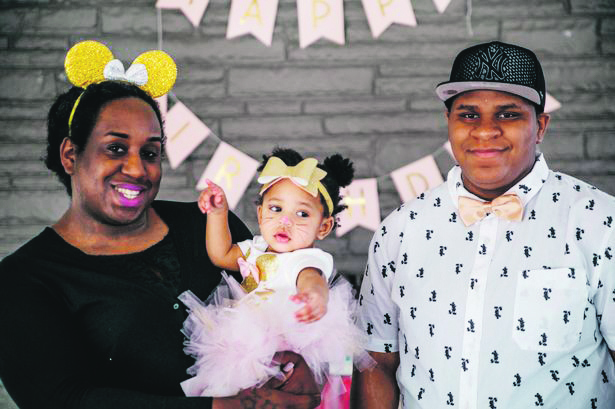Katlego K Kolanyane-Kesupile looks at the manifestation of trans parenthood
“If you gave the sperm, aren’t you then the father?” they’ll say to you, and expect an easy answer. For decades now, the global transgender narrative has been shrouded in biological essentialism — reducing people to genital formation rather than who they identify as. However, over the past few years, there has been a significant shift in how trans-related stories have been told, due to the increased visibility of trans* people and them taking agency in the telling of these stories. Having fought long enough to be seen as human, the trans* population of the world is taking on another aspect of life: procreation.
The creation of life has evolved through time with the assistance of scientific developments, but one fact remains at this particular point — gestation requires a uterus. Trans* people, being much like most people, will at some stage in their lives question whether they want children or not; when; with whom; how; what they’d like to name them, and what they’d like the children to call them. Previously, we only heard about parents transitioning after having children, thus navigating transitioning from being “mom” to “dad” or vice versa.
What’s highlighted in a recent Vicks advert in India featuring an adoptive trans* mother, or in Hayden Cross’s case in the UK, is that transgender parenting is still a social, medical and legal battle. Formerly, 22 European states mandated the sterilisation of transgender people in order to officially change their gender markers; this was overturned by the European Court of Human Rights in April 2017, declaring it a human rights violation.
At the age of 12, as a trans* child, I said to my mother: “I just want you to know that I’m not giving you grandchildren.” This was after learning how babies are made in science class and it turned out I didn’t have the equipment to make me a birthing mother so, by deduction, mom wouldn’t get grandchildren from me. Simple, right? Almost 20 years later, I still feel the same way but for different reasons — having children is a commitment I am not willing to make. But for every child I am not having as a transwoman, there are people around the world — from Ecuador to the US to Botswana — navigating parenting as transgender adults.
In 2007, Thomas Beatie, an American, became the world’s first “pregnant man”, having legally changed his gender marker. During his marriage to his wife Nancy, he carried three children by IVF (in vitro fertilisation), while he continued his transition surgeries. Scott Parker (23) and Hayden Cross (21) became the first legally recognised transmen to give birth in the UK this year. More and more transmen are acknowledging and embracing their physiological abilities to bear children — and as such challenging the great turmoil resulting from confronting the essentialist gendering imposed upon them at birth. This is partly due to empowerment, and partly due to being legally forced by states; because while you can change your gender marker without undergoing any surgery, healthcare may not cover freezing a transman’s eggs — as was Cross’s case. So where does this place transwomen in motherhood politics?
For the 12-year-old me, being a mother involved going into labour. Nowadays, our understandings and embodiments of motherhood are rooted in the roles we play in children’s lives rather than who birthed them. So you’ll hear of parents called everything from “mom” to “mapa”. Trans* people are furthermore complicating parenting by openly being women who are birth fathers, and men who are birth mothers. While Beatie, Parker and Cross were inseminated by men who were not their partners, now more trans* couples are coming forward and sharing their conception and parenting stories.
Ecuadorian couple — Diane Rodriguez, a transwoman, and Fernando Machara, a transman — had their child because they refused state-mandated sterilisation. American trans* couples Bianca and Nick Bowser, and Racquelle Trammell and Liam Johnson, and gay couples — Kayden, a transman, and Elijah Coleman; and Trystan Reese and Biff Chaplow — show the multiple manifestations of creating life as transgender people. Additionally, these cases disrupt the “born in the wrong body” narrative, because what is the “right body”, and to whom does it belong?

Biff Chaplow and Trystan Reese
Childbearing transmen remain a more sensational story than transwomen who donate sperm, because they defy the bounds of prescribed masculinity and manhood. The trope of the ruthless, childless corporate woman was created to stand in direct contrast to the homebound, subservient childbearing woman, pitting them against each other with the former being shown as the successful, stronger and smarter one because she becomes more like a basic man. Now, with transmen engaging in pregnancy, simultaneously inhabiting manhood without subscribing to motherhood stereotypes, it poses a significant question: what is motherhood in the advent of trans* birthing? As Reese says: “I’m OK being a man with a uterus.”

Raquelle Tramell and Liam Johnson
I maintain that biological or legal motherhood isn’t for me, as I’d rather dedicate myself to nurturing a compassionate generation of children and building a world where their freedom of identity can flourish; and having my own child doesn’t get me any closer to that goal. So, I mother by being “Aunty Kat”. And when my friends’ children surprise other children’s parents by explaining gender identity and expression as fluently as their cartoon preferences, I see that as my accomplishment as a trans* mother.
While much of the world grapples with which toilets we use or what pronouns we prefer, some of us are taking on the bigger tasks of birthing and raising generations of people we hope will respect their fellow humans, trans* or not. The conversations about being a transgender parent need to move from who gave birth to the child to how the social, political, medical and legal structures in the countries we live in can best support families with transgender parents. Had I any interest in it, I trust I could be the mother who fearlessly tells my child “my sperm made you” and they’d understand; I just want other people to get their children to understand this too.
Katlego K Kolanyane-Kesupile is an international award-winning ARTivist, educator, author and human rights advocate, with a concerted focus on LGBTQ+ livelihoods in Botswana. She is a 2017 TED Global Fellow, 2016/17 Chevening Scholar, YALI Fellow (Young African Leaders Initiative) and artistic director of the Queer Shorts Showcase Festival in Botswana
EXPLAINER
trans* The asterisk makes special note in an effort to include all transgender, non-binary, and gender nonconforming identities, including (but not limited to) transgender, transsexual, transvestite, genderqueer etcetera.
gender marker: how your gender appears on legal documents. Even if a person has gender reassignment surgery, they may choose not to change their gender on their legal documents.